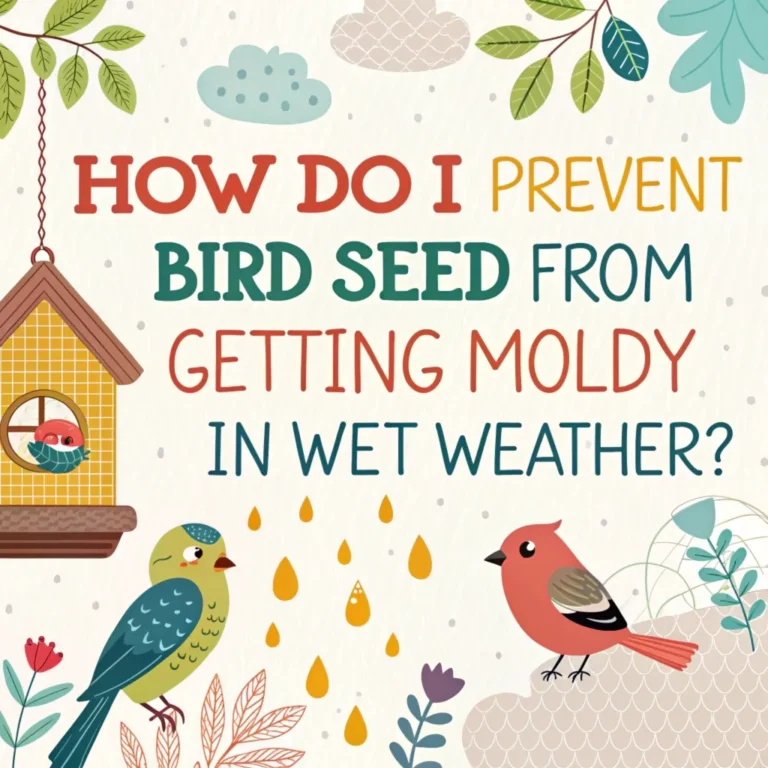How Far Apart Should Multiple Bird Houses Be?
When setting up multiple birdhouses, the distance between them is important for a peaceful nesting environment. Different bird species have specific needs. For example, bluebirds prefer a distance of 100 to 150 feet, while wrens are fine with just 15 to 20 feet apart. Knowing these preferences helps reduce conflicts and attracts a variety of birds to your yard.
To create the best layout for your outdoor space, consider the types of birds you want to attract. Plan the placement of each birdhouse according to the required distances for those species. This thoughtful arrangement will support a harmonious environment for nesting birds.
Key Takeaways
To encourage healthy bird populations, space birdhouses according to the needs of each species.
- Bluebirds need their houses placed 100 to 150 feet apart. This distance helps them establish territory and reduces competition for resources.
- Wrens, on the other hand, require only 15 to 20 feet between their houses for successful nesting.
Different bird species have unique spacing needs to avoid territorial conflicts. Proper spacing of birdhouses supports a balanced ecosystem and attracts a diverse range of birds.
To find the best distances for your area, observe the local bird populations. This will help you create an inviting environment for various species.
Understanding Bird Territories
Understanding bird territories is important for placing birdhouses effectively. Each bird species has a specific territory size that depends on food availability and nesting sites. Knowing these boundaries helps prevent conflicts between birds.
During breeding, male birds defend their territories to attract females, making the placement of birdhouses crucial. If birdhouses are too close together, it can stress the birds and discourage nesting. Aim to place birdhouses at least 10 to 30 feet apart, depending on the species.
Watching local bird populations will help you understand their territory sizes and create a peaceful environment. In the end, a welcoming space supports successful breeding and fosters a connection between you and the birds.
Factors Influencing Birdhouse Placement
When placing birdhouses, consider several important factors to increase their success.
First, choose strong, weather-resistant materials for durability and comfort. Untreated wood is a good option, as it avoids harmful chemicals.
Next, think about the weather. Birdhouses in shaded areas can protect against strong sun and heat, while those in sheltered spots can shield from wind and rain.
Additionally, be aware of local predators. Placing birdhouses away from dense shrubs can help birds feel safe.
Optimal Distances for Common Bird Species
The spacing between birdhouses is important for attracting and keeping different bird species. Knowing the right distances can help you create a welcoming environment.
For instance, bluebirds like their houses to be 100 to 150 feet apart. This distance helps them establish their territory without overlapping with others.
On the other hand, wrens prefer to be closer together. They need only 15 to 20 feet of space between their houses.
These preferences show why it's crucial to set up your birdhouses based on the types of birds you want to attract. By respecting these distances, you increase the chances of birds using your houses and create a friendly atmosphere for them.
Paying attention to their needs helps create a lively and balanced backyard ecosystem.
The Role of Competition Among Birds
Competition among birds affects where you place birdhouses in your yard. If you put houses too close together, birds may fight over territory. This fighting can deter some species from settling in your yard.
Birds need enough food, water, and shelter without constant disturbances from neighbors. To reduce conflict, space your birdhouses properly. This simple action encourages a variety of bird species to visit while creating a peaceful environment.
A well-planned yard can attract different birds and promote harmony among them.
Attracting Different Species With Strategic Placement
To attract various bird species, place your birdhouses thoughtfully. Different birds prefer different habitats. Here are four simple strategies for effective placement:
- Vary Heights: Hang birdhouses at different heights. This will attract both ground-nesting and tree-nesting birds.
- Consider Distance: Space the houses apart to reduce competition. This encourages different species to occupy nearby homes.
- Add Natural Cover: Place birdhouses near shrubs or trees. This provides shelter and safety for more timid birds.
- Balance Sunlight and Shade: Think about sun exposure. Some birds prefer sunny spots, while others like cooler, shaded areas.
By using these strategies, you can create a welcoming environment for a wide range of bird species.
Happy birdwatching!
Designing Your Garden for Birdhouses
Design your garden to include birdhouses by focusing on layout, style, and placement. Choose birdhouse styles that attract different bird species while enhancing your garden's look. Mixing rustic wooden houses with modern designs adds interest and diversity.
Place birdhouses among flowers and shrubs to create safe spaces for birds. Space them out to avoid territorial conflicts, yet keep them visible for easy birdwatching.
Use colors that match the plants to improve the overall appearance of your garden. By integrating birdhouses thoughtfully, you create a friendly environment for birds and a pleasant space for yourself.
Seasonal Considerations for Birdhouse Positioning
Seasonal changes affect how you should position birdhouses. Birds look for safe places to nest in spring and need shelter from cold in winter. Adjusting where you place birdhouses can make them more appealing and useful.
Here are some key factors to consider:
- Location: Place birdhouses in spots that shield them from wind and rain, especially during winter.
- Sunlight: In winter, position birdhouses to receive sunlight to keep them warm.
- Accessibility: In spring, ensure birdhouses are easy for nesting birds to access.
- Predator Awareness: In summer, move birdhouses to reduce risks from predators.
Maintenance and Monitoring of Birdhouses
Seasonal factors influence how you position birdhouses, but regular upkeep is crucial for their success.
Clean your birdhouses at least twice a year: once before nesting season and once after the young birds leave. This routine helps remove parasites and debris that can keep birds away.
Check each house for signs of nesting or damage to evaluate its condition. Keeping a simple journal can help you remember when you did maintenance or noticed any changes.
Creating a Bird-Friendly Environment
To attract various bird species, create a bird-friendly environment that meets their needs for shelter, food, and safety.
Here are some simple steps to enhance your outdoor space for birds:
- Plant native plants: Choose local species that provide food sources like seeds and berries.
- Install water sources: A birdbath or small pond gives birds a place to drink and bathe.
- Offer nesting materials: Provide twigs, grasses, and feathers to encourage birds to nest in your area.
- Ensure safe habitats: Avoid pesticides and keep cats indoors to protect visiting birds.
Frequently Asked Questions
Can Birdhouses Be Placed in Trees or Only on Poles?
You can place birdhouses in trees or on poles. Tree placement allows for natural shelter, but poles provide stability and easier access for maintenance. Each option has its benefits. Choose based on your yard's layout and the types of birds you want to attract.
How Can I Tell if a Birdhouse Is Occupied?
To check if a birdhouse is occupied, watch for signs of nesting. Frequent bird visits or chirping sounds indicate activity. Look for feathers or droppings around the entrance. These signs show that birds may be using the birdhouse as their home. Enjoy observing your feathered neighbors!
What Materials Are Best for Building Birdhouses?
When building birdhouses, choose strong wood types like cedar or pine for the main structure. These woods resist decay and last longer. Add insulation materials like straw or sawdust. This keeps the birdhouse warm in winter and cool in summer, creating a cozy home for birds. By using the right materials, you help ensure the safety and comfort of your feathered friends.
Should I Use Birdhouse Decorations or Keep Them Plain?
Choosing how to decorate your birdhouse is important. If you want to attract birds, use simple designs that blend with nature. Avoid bright colors and busy patterns, as they may scare birds away. A plain birdhouse provides a safe and inviting space for your feathered friends. Focus on natural materials and subtle colors to create a welcoming environment.
Do Different Bird Species Prefer Specific House Shapes?
Different bird species prefer specific house shapes. Their nesting habits and physical traits influence these choices. Selecting the right shape can attract a variety of birds to your yard. For example, bluebirds often favor houses with a round entrance, while wrens prefer smaller openings. Understanding these preferences helps create an inviting environment for diverse bird populations. By adjusting your birdhouses to match these needs, you can enjoy watching different birds visit your space.

Ava is a bird enthusiast and nature lover who has spent countless hours observing and learning about the fascinating world of birds. With a passion for sharing her knowledge and inspiring others to appreciate the beauty of birds, Ava writes about her experiences and insights on avianadmirer.com.







